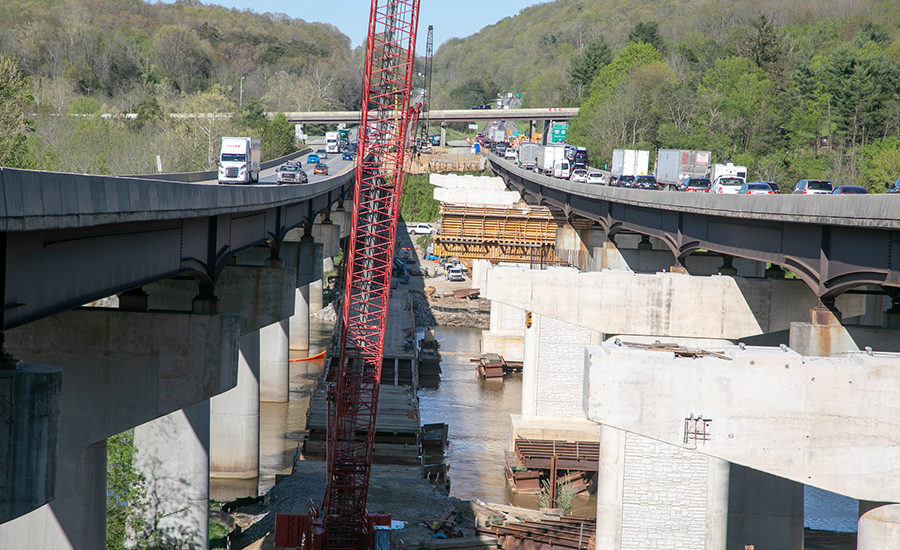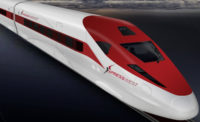July 7 marks the 100th anniversary of the first U.S. Army trans-continental convoy, a test of military mobility in wartime. More than 80 trucks and other vehicles hit the roads. On all, 24 officers and 258 enlisted personnel set out on that date in 1919 from Washington, D.C., and arrived in San Francisco 61 days later.
Joining the trip in Frederick, Md., not far from Washington, was an observer for the War Dept., a young lieutenant colonel with the Tank Corps, Dwight David Eisenhower.
The convoy, which Eisenhower termed the “truck train,” encountered roads that varied from excellent to terrible, and dealt with heat, storms, wind, quicksand and vehicular breakdowns.
Years later, Eisenhower credited his experiences on the cross-country trek—along with his later views of the importance of Germany’s autobahns—with helping to spark his interest in the Interstate Highway System, which Congress created in 1956 during Eisenhower’s first term as president.
Doug Hecox, a Federal Highway Administration spokesman, said in an email to ENR, “It was unquestionably one of America’s worst road trips, but it might have been history’s most important.”
The long-ago trip offers lessons now, too, says Brian Deery, senior director of the Associated General Contractors of America’s highway and transportation division/
“The whole notion of a national system is what I think Eisenhower’s Interstate was all about," Deery said in an interview. "And I still think it’s relevant today, because state priorities are not always national priorities.”
Deery, who has worked on highway issues for decades, notes that political influences vary from state to state, as do influences from various users, such as local agricultural and manufacturing interests.
He says, “That’s why an interconnected national system is still as important today as it was when Eisenhower first came up with the idea.”
1919: Conditions varied from state to state
In fact, in a post-trip report to his superiors, Eisenhower noted that the road quality varied greatly. He said roads in Pennsylvania were "very good, though at some points, poorly graded." California roads were "excellent paved ones."
But in western Nebraska, the convoy lost two days from its schedule "due to bad, sandy roads," he said. "From Orr's Ranch, Utah, to Carson City, Nevada, the road is one succession of dust, ruts, pits and holes."
Over the years, some in Congress have called for “devolving” much of the authority for the federal-aid highway system to the states and cutting the federal motor-fuels tax.
Last year, for example, Sen. Mike Lee (R-Utah) proposed the Transportation Empowerment Act, which would phase down the federal gas tax to 3.7¢ per gal. from 18.4¢, reduce federal highway funding and transfer responsibility for much of the federal-aid system to the states. The bill, however, did keep the Interstate as a federal responsibility. The measure didn’t pass in the last Congress.
Deery says that if devolution were adopted, a state could choose to focus its highway investments on related development projects in regions that the state's leaders deemed to be priorities. The leaders might also deemphasize highways in other parts of the state. He says, “That could impact interstate commerce.”
21st Century Outlook
Matthew Jeanneret, American Road & Transportation Builders Association's chief operating officer, sees a sharp contrast between the push for the Interstate network and the current picture. "The Interstate highway system was a classic example of American ingenuity and a can-do attitude when it comes to infrastructure," Jeanneret said in an interview
He adds, "You contrast that with today and where we are with infrastructure policy in the 21st Century, we have a can't-do attitude. And that's probably the greatest example of how things have changed."
He says, "Our infrastructure system in the 21st Century does not meet the challenges that are before us."
Sixty years ago, Jeanneret says, "America could build big...for economic and military and national security reasons. You contrast that with today—you don't see that same vision or that same commitment to building big to meet the current-day challenges."
In his report, Eisenhower also observed, "The truck train was well received at all points along the route. It seemed that there was a great deal of sentiment for the improving of highways, and, from the standpoint of promoting this sentiment, the trip was an undoubted success."





Post a comment to this article
Report Abusive Comment